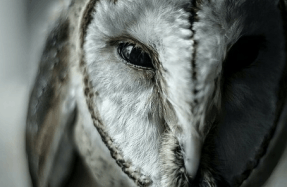Kenya’s Thirsty Year

Mnyesi Ekuom spends a lot of his time watching the tedious activities of the Lodwar Livestock Market. His patience was honed over years spent walking his family’s goats across the parched Turkana countryside when he was a young man, searching for water and pasture. Unless he is making an emphatic point, his eyes are the most animated part of him: the creases at their corners might come from his constant, focused assessments of everyone around him, as much as from squinting against the sunlight.
The Livestock Market is a dusty, fenced-in clearing just outside the town center, near the banks of the Turkwel River. Lodwar, the county capital of Turkana, about six hundred kilometers northwest of Nairobi, is as dry and parched as the rest of the county, but young men and women from small hamlets in the countryside trek here every day hoping to sell a goat, sheep, or cow for money they can take back to their families. I stand with Ekuom as he watches them waiting to make a sale, amid the hum of a market reeling from disaster: the crippling eighteen-month drought that, between October 2016 and March 2018, decimated the Turkana countryside.
The young men at the market are drawn to Ekuom, an elder who has survived several droughts, as if his experience might somehow take away the sting of this season. Everyone here has lost livestock—Ekuom himself has lost at least seventy-four goats, camels, and cattle—and people gather at the market not because there is much to sell, but mostly because it is what they have always done.
As these young men talk to Ekuom, they seem more than a little daunted by the future. Their conversation is primarily in Turkana, which I don’t speak, but I can catch some sentences and read their exhaustion. It’s February; the earth has been dry for more than a year and right now there’s no sign of reprieve. The men seek reassurance. But Ekuom has nothing to offer but his own fatigue. “We’ve lost everything,” he says. “There’s no rain and there’s no grass, so now we are just waiting for the goats that are left to die.”
Ekuom is a member of Kenya’s Turkana community, the majority ethnic group after whom the county is named. Their traditional homelands cover a staggering 13 percent of the surface area of the forty-seventhlargest country in the world. Much of that land is arid or semi-arid, which means that in a good year, the people of Turkana see less than twenty inches of rain. In a bad year, parts of Turkana get no rain at all. But the problem isn’t just the lack of
You’re reading a preview, subscribe to read more.
Start your free 30 days





